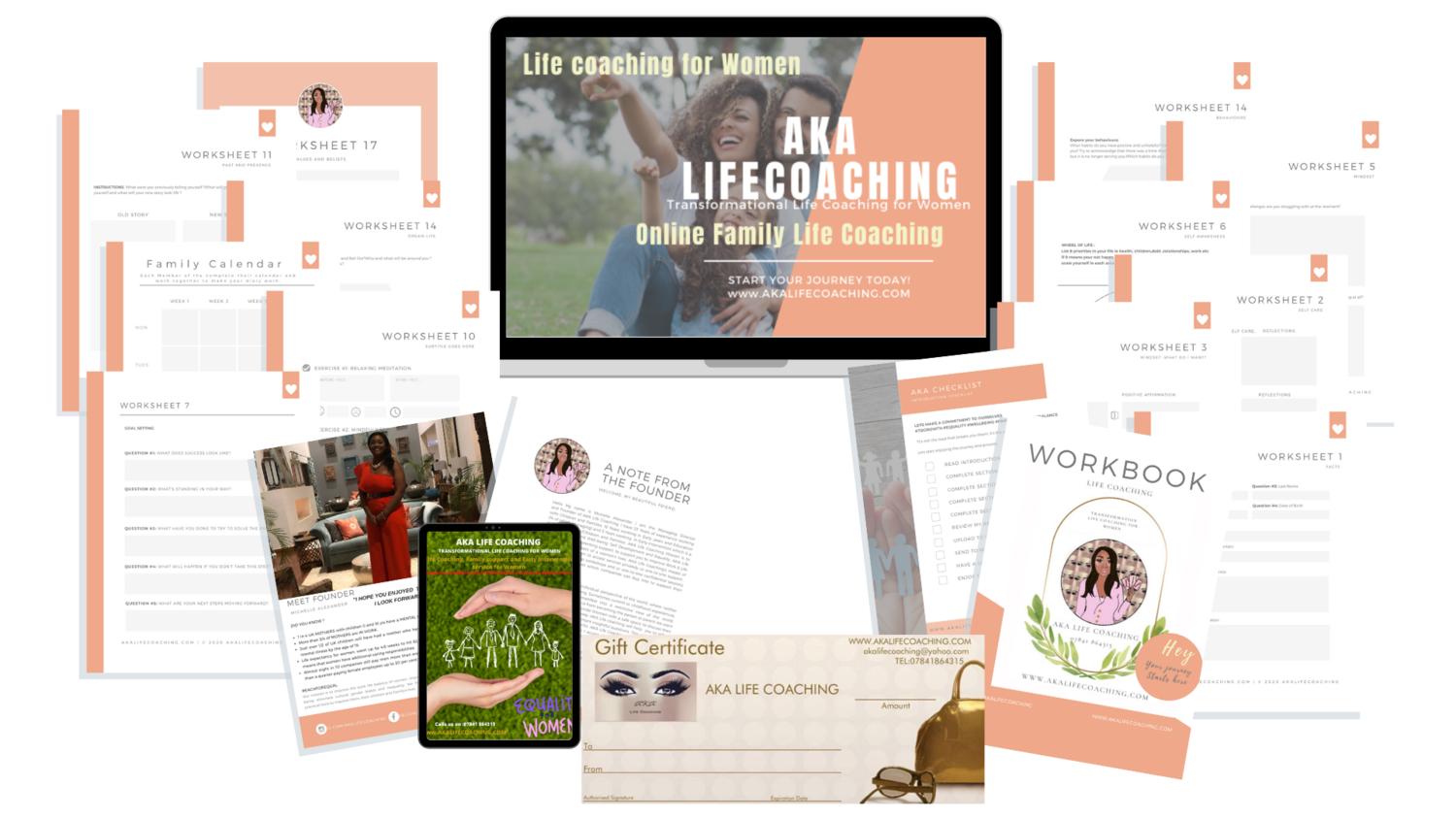AKA Life Coaching Journal
Family Life Coaching
Introduction
Why AKA Life Coaching ?
The pressure of an increasingly demanding work culture in the UK is perhaps the biggest and most pressing challenge to the mental health of the general population.
One in six of us will experience a mental health problem in any given week, and our mental health awareness day research this year suggests that a majority of Britons have experienced some kind of mental health problem. We at AKA Life Coaching thing that preventive is better than cure, Life coaching provide as way of analysing areas that you believe needs development, setting goal so they you become solution focused.
What is work-life balance?
i am passionate about ensuring that everyone has a work life balance that works for them. So what is Work-life balance? Work life balance is the relationship between your work and the other important things in your life, such as your family, sport and social life, household chores, volunteer commitments and so on. If you feel like you have enough time for all of these things in your life, you probably have a good work-life balance.
Your work-life balance will often change as your work, family and other responsibilities change. With realistic expectations, and some trial and error, you’re likely to find an approach that helps you and your family achieve work-life balance in the long term.
Work-life balance: why it’s good
Good for children
To develop, learn and thrive, children need warm, loving attention and quality time with you.
If you have a work-life balance, you’re more likely to have the mental and emotional energy to give your children the attention they need. You’ll also have more opportunities for quality time with your children – that is, time when you’re really focused on your child.
Good for you
Part of looking after yourself is making time for the things that are important to you, like work, hobbies, volunteer activities and family. When you find a good balance of all these things, you’re likely to feel:
less stressed and tired
more in control of your time
better able to make decisions and meet commitments
physically healthier.
A well-balanced family life can actually help prevent burnout at work too.
Looking at work arrangements to achieve better work-family balance
Family-friendly work arrangements might help you achieve a better balance between work and family time. You can find out about your employer’s family-friendly policies by looking at your workplace agreement or talking to your workmates. Then talk to your boss or manager about it.
Options might include:
working flexible hours – for example, you might be able to arrive late and work late or vice versa, which can make school drop-offs or family dinners easier
working from home
working fewer hours – for example, by working part time or job-sharing
negotiating shifts that give you a few days off in a row, or time at home before or after school.
It doesn’t matter what your friends do or what other people think you should do – choose the option that’s best for your family.
Good for your relationships
Quality time spent together is the building block of all relationships, so a good work-life balance gives you the time and energy to develop better relationships with your children and your partner, if you have one.
Changing work habits to achieve a better work-life balance
If you’re wondering how to get your work done and enjoy time with your children, it might help to look at your work habits. This is about approaching work differently, rather than spending less time on or at work – which isn’t always possible.
Here are some ideas:
Review the workday in your mind before you leave or finish work. This can help you shift gradually to thinking about home and family.
Try to arrange your work so you take on the most challenging tasks at the beginning of the day, instead of at the end.
Take a moment in your workday to think about your children. This could be just looking at a photo or thinking about a special thing you’ve done together recently. This can help you remember the reason you’re trying to achieve a work-life balance.
Try to set boundaries around how much work you do at home, including limits on checking and responding to emails or phone calls.
Try to set boundaries about when you work at home. For example, you could try blocking out parts of the day for work, rather than constantly checking in with work.
If you work from home, try to keep your work area separate from family areas. Put boundaries in place about start and finish times, and be clear with coworkers and clients about your work hours.
Switching from work mode to family focus
When you get home from work – or finish work if you work from home – it can be worth trying to put work to rest in your mind. This can help you feel more ready to give your children loving attention and quality time. It can also help you relax and make the most of time with your family.
Here are some ideas to help you switch from work mode to a family focus:
Turn off your work phone and tune out of work on your way home by reading, or listening to music, the radio or a podcast.
Try walking or riding a bike home if you can. Or if you work from home, walk around the block when you finish work or do a five-minute workout.
Think about ways to make travel time more relaxing. For example, join a car pool or use public transport instead of battling traffic.
Do a simple mindfulness exercise, perhaps before you finish or leave work or in your parked car.
Call your partner, your child’s carer or your child on the way home. This can take your mind off work and give you a chance to catch up on your family’s day. It can also help you work out who or what needs your attention when you get home.
Have a ritual or routine to mark the physical, mental and emotional move from work to home, from worker to parent. It can be as simple as changing out of your work clothes.
Talk with your family, including older children, about the challenges of making the transition from work to family mode, especially during stressful times at work. Help them see things from your perspective and try to see things from theirs.
Key points
A healthy work-life balance is good for your children, your family relationships and you.
You might be able to change your working arrangements to get a better work-life balance.
You could look at your work habits and reflect on whether you could approach work differently.
Simple strategies to help you switch from work to family mode include turning off your phone, doing physical activity and changing out of work clothes.






